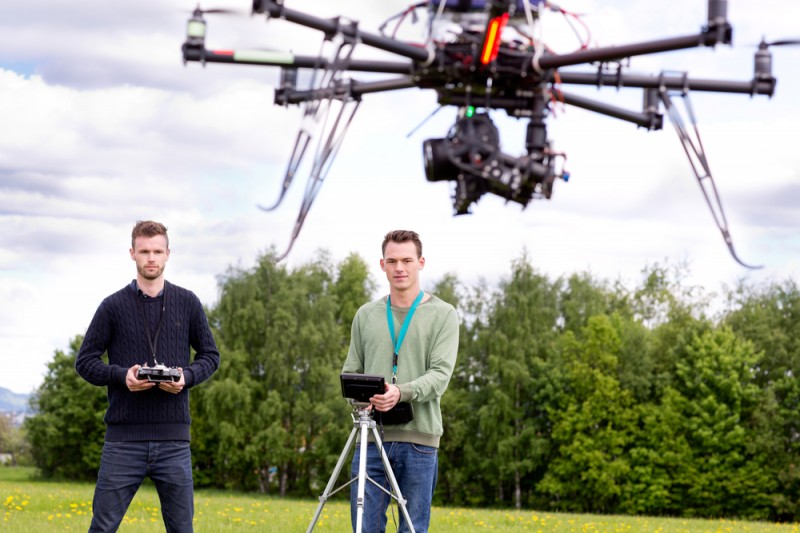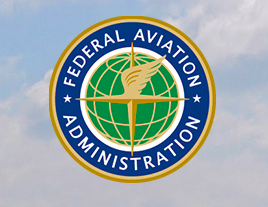FAA Drone Approvals Bedeviled by Internal Conflict, Political Pressure
By Craig Whitlock at the Washington Post
The Drone Approval Process
The Federal Aviation Administration proclaimed a new era in aviation in September when it granted permission to six Hollywood filmmakers to fly drones on movie sets, a decision that opened the door to commercial drone flights in the United States.
“These companies are blazing a trail,” Transportation Secretary Anthony Foxx said at the time. “We are thoroughly satisfied these operations will not pose a hazard to other aircraft or to people and property on the ground,” added Michael Huerta, the chief of the FAA.
What the FAA did not reveal, however, was that senior officials had overruled objections from some of its safety inspectors, who had warned after a formal review that the filmmakers’ plans were too risky and should be prohibited, according to documents and e-mails obtained by The Washington Post.
The warning turned out to be prescient. On Wednesday, a camera-toting drone operated by one of the filmmakers, Pictorvision, flew off a set in California and disappeared, according to an FAA report. Tom Hallman, the president of Pictorvision, said crew members found the 20-pound drone the next day in “rugged terrain” on a private ranch about 100 yards from where they had been filming near Santa Clarita. He said no one was injured.

Since giving the go-ahead to Hollywood cinematographers three months ago, the FAA has been swamped with requests to fly drones from other companies. As of Friday, 167 applications from an array of industries were pending, and the government is bracing for hundreds more next year.
Aerial Mob, a cinematography company that uses drones, was granted a permit in September to use the aircraft. (Tony Carmean/Aerial Mob via Associated Press)
Several FAA employees, speaking on the condition of anonymity for fear of retaliation or losing their jobs, said supervisors are pressuring analysts to rubber-stamp the applications without a rigorous safety review.
“There’s huge political pressure to do quick approvals,” said one former FAA flight safety official. “Congress made very clear what they want, and safety is not at the forefront because of pressure from the industry.”
Safety inspectors said they were being marginalized in other ways. Last month, the FAA hired a lobbyist for the Hollywood filmmakers and other companies that want to fly drones. His task? Suggest ways to speed up the drone approval process.
“How is this not a conflict of interest?” Lance Nuckolls, an FAA safety inspector, complained in an e-mail to colleagues. “I’m now officially numb with total dismay and disgust with our leadership.”
After The Washington Post raised questions about the arrangement, the FAA acknowledged that it had been a conflict of interest and said it ended the contract Thursday.
The FAA’s caseload is cresting at a critical time and is aggravating disagreements within the agency over how to open the nation’s skies to drones. Cheap, easy-to-fly drones equipped with video cameras have become hugely popular with consumers and hobbyists. But in the absence of clear safety standards and effective oversight, the robotic aircraft are interfering with air traffic and threatening passenge planes.
Since June 1, pilots have reported 25 near-collisions with rogue drones and about 150 other incidents in which drones were spotted in forbidden airspace. Although most weighed only a few pounds, aviation experts said they could have caused a midair disaster if they had struck a plane or helicopter in a vulnerable spot.
Drones can also hurt bystanders on the ground. According to an FAA document, four people have been killed in recent years around the world after remote-controlled aircraft crashed into them.
James H. Williams, the head of the FAA’s unmanned-aircraft integration office, declined an interview request or to comment for this story. Last month, during a panel discussion at a drone-industry conference in Tysons Corner, Va., he said the agency always puts safety first.
“There are approximately 48,000 people in the FAA, and as far as I know, all of them have an opinion on unmanned aircraft integration, so coordinating across that body is an interesting challenge,” Williams said. “The FAA remains committed to our primary mission of safety, and that’s safety not only for the other aircraft in the air but for people and property on the ground.”
In a statement provided to The Post, the FAA said its drone application process was “rigorous” and “transparent.”
“The safety case for each application is thoroughly analyzed and the rationale for each decision is publicly available,” the FAA said. “As with any emerging technology, there is a very active debate about how to approach integration, and the FAA has decided to take a staged approach.”
Struggling To Keep Up
Bogged down by staff shortages and a slow-moving regulatory structure, the FAA has failed to keep up with rapid technological advances in the drone industry.
Although Congress has ordered the agency to integrate drones into the national airspace by September 2015, U.S. officials expect the FAA will miss the deadline by at least two years before it can finalize regulations for drones weighing less than 55 pounds. Devising rules for larger drones will take even longer.
Until then, the FAA has stitched together an interim patchwork of guidelines. Businesses are prohibited from flying drones without special approval. Recreational drone flights are allowed as long as the aircraft stay below 400 feet and five miles away from an airport. The military and other government agencies need a certificate to fly in civilian airspace.
The guidelines, however, are routinely ignored by drone enthusiasts. With an estimated half-million small drones spinning around America’s skies, the FAA has been overwhelmed.
To alleviate pressure from lawmakers and drone manufacturers to adopt a permanent set of rules more quickly, the FAA announced in May that it will offer a temporary remedy.
The agency said it will consider granting approval to certain types of low-risk businesses — such as pipeline inspectors, filmmakers and corporate farmers — to fly drones weighing less than 55 pounds. Requests would be reviewed on a case-by-case basis.
Within days, applications started pouring in.
Insurance giant State Farm wanted to fly 15-pound drones over houses to conduct roof inspections. Chevron and Dow Chemical wanted to use drones to keep an eye on their oil, gas and chemical plants. Amazon.com wanted to test drones to see if they can reliably transport packages to customers’ doorsteps (Jeffrey P. Bezos, the chief executive of Amazon, also owns The Post).
Each of those cases is pending. The FAA has said its policy is to make a decision on each application within 120 days. It met that timetable for the Hollywood filmmakers but has struggled to keep up with the avalanche of new cases.
Note From Dronethusiast.com
This article also shows clearly that FAA personnel are having huge difficulties handling the situation. Which is natural when personal safety is at stake and the technology is hardly understood well by regulators, the public and lawmakers. The struggle to keep up with the rest of the world is also understandable from the economic point of view. After all, the US has always been at the forefront of exploration and innovation in the history of modern technology.
In the hobbyist UAV industry, the market leader seems to be a Shenzhen based Chinese company producing the darling of hobby drones, the DJI Phantom 2. And it seems to be a genuine Chinese company, not one that is producing products there.
In commercial applications, countries like Canada and the UK are ahead of the US with regulation that seems to be working well and commercial applications approved by the thousands.
Be careful not to lose your quadcopter while flying! Read our best quadcopter tracking guide!
So the US obviously does not want to get left behind and get ahead in the race while it’s still possible. At the same time, the US is the main target of terrorism and 9/11 took place on its soil, so safety concerns are totally understandable. Other countries also might have better geographical circumstances being less densely populated, though the US also has plenty of natural open space to fly. The problem is that is not where people want to fly.
At the end of the day, a race for adoption can be great for us hobbyists and also if you want to fly commercially as long as safety is observed and protected and a wide scale adoption is reached with approval from all sides, the operators, the regulators and the public. The press at the same time also has to be educated as extremely silly and sensationalist coverage is hurting the industry and everyone involved.
Read more at: The Washington Post





let the FAA involve themselves with airlines and airplane safety. Drones are not all the same. A little Phantom is nothing compared to a 50lb drone nor is a micro copter even worth the FAA getting involved with. Furthermore the FAA is obsessed with Commercial Use of drones. Why is that their business–what one does with the pictures? Let them be concerned about safety sure but stay out of OUR business.
“Drones can also hurt bystanders on the ground. According to an FAA document, four people have been killed in recent years around the world after remote-controlled aircraft crashed into them.”
Is this a joke? comparing multirotor craft to other RC aircraft. 3D Helicopter that killed it’s operator is 1000 times more dangerous, in UK it was a model airplane and I guess you’ll have to go way back to 2006 for the 2 that got killed in Hungry from a large RC airplane. If the FAA was so into safety then way not stop all low flying helicopter traffic over heavily populated residential or commercial areas.
I am a private pilot and a drone flyer as well. I do believe the current FAA regs for commercial drones are a it overboard. On the other hand, I don’t want to be flying and bump into one. Yesterday, on You Tube, I saw a video someone posted where they flew a Quad in into and above the clouds. Very dangerous.
Without some level of control by the FAA, there could be chaos in the air. The drone industry is just getting started and if not regulated within reason, somebody somewhere is going to cause an accident.
The FAA is cumbersome and will likely be a while before they get it right. What we can do is hold the heat to them by calling on congress to drive this issue.
With corporations chomping at the bit to get their drones into the sky, I’m sure this will be the force that drives it through.
Fly Safe.